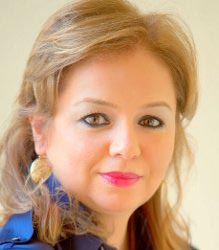Recently I wrote a blog post for InCulture Parent magazine that was later republished in the Huffington Post. The article was titled “Raising a Hijab-Wearing Daughter in a World that Doesn’t Understand” It got a number of responses that shouldn’t have surprised me but did nevertheless. I also made me think about all the misunderstanding surrounding the Arab women’s mode of dress, whether they were religiously or culturally inspired.
To pretend there is no controversy and frequently ignorance surrounding the topic of hijab and the veil would be like “sticking our heads in the proverbial sand”. In my experience and after engaging in discussion with people from diverse parts of the world, even my home country, men and women alike posed the question, ‘Why do they wear it?” A shroud of imagined mystique with equal parts exoticisms springs to their minds. On the one hand, you have Scheherazade and her tales of 1001 nights and the veil swirling beauties portrayed in movies through decades of Hollywood.There is the allure of Egyptian Pyramids, belly dancing and the water pipe. Many are infatuated by the beat and rhythm of Arabic music, the rich background of poetry, literature and architecture, language and even cuisine. However, when the issue of the hijab (veil) comes up a heated discussion of opposing philosophies arises. There is a long history of women from different religions as well as men in some cases, covering their hair or head. Since we live in Dubai, a Muslim Emirate, I thought it would be appropriate to describe to our expat followers and inquiring minds some of the local female traditional clothing.
The first that comes to mind is the Abaya. This traditional black cloak worn by women has its roots in Bedouin culture. The Abaya is versatile and practical as well as modest. It is usually accompanied by the swirled and tucked veil, the Sheila, which is sometimes loosely pulled over the face and called the Ghushwa. Lately, some younger girls have started wearing only the Abaya as a sign of their culture without the hair covering Sheila. Sometimes, the older women from the region wear the Burqa.
The Burqa is a leather shield sewn with metallic thread and covers the upper part of the face leaving an opening for the eyes. The reasons for wearing any or all of the face coverings are multiple and also personal in choice. Tradition, culture, practicality. as in the case of women living in harsh conditions of the desert, and religion. I can see the logic behind covering the face and body during the unbearably hot days and during merciless Shimal sandstorms while huddling under a tent in the middle of the Arabian Desert.
Another reason that might be sometimes overlooked is that women of the region have always treasured their complexion and valued fairer skin. Constant exposure to sun and sand is not the best way to maintain it.
The Abaya is worn over…well…anything. Its silky folds cover a myriad of garment choices. Again, older generations stick to the traditional Gelabiya, a long gown usually embroidered with intricate designs around the neckline. Underneath, they would wear a pair of tights. Younger generations might slip on a pair of jeans and a t-shirt or a simple dress.
During the last few years a multitude of Abaya and Islamic fashion designers have found international visibility and in some cases fame. Entire fashion shows are geared towards showcasing these two types of designs. Malaysian, Filipino and Emirati designers plus those from other parts of the world have found a niche as yet unfulfilled and with untapped potential.
My fascination with the Abaya started during my years in Qatar and has continued to this day. I love watching the eclectic parade of the gracefully attired ladies and girls as they pass by leaving a heady scent of perfume behind…I love the beautiful kohl lined eyes peering above the Ghushwa and the creativity that goes into designing that perfect unique Abaya. In my novel I have devoted many pages to describing the garment and cultural nuances that surround it.
Whether dotted with Swarovski crystals or gold thread, pearls or leather, fur or beads, the Abaya and other forms of Muslim inspired fashion continues to intrigue and fascinate.
Zvezdana Rashkovich was born in ex-Yugoslavia. At the age of seven she started her lifelong nomadic journey across Sudan, Egypt, Libya, Iraq, Qatar, Dubai and the United States. A fluent Arabic speaker, she has worked as a medical and legal interpreter for refugees in the United States. Owing to her eclectic experiences she has developed an intense enthusiasm for multiculturalism. Zvezdana currently lives in Dubai with her Sudanese husband and four children. She is the author of Dubai Wives and is working on a memoir, Africa in the way I dance.
Zvezdana blogs at Sleepless in Dubai where she shares her experiences as an expat, mom and writer.

